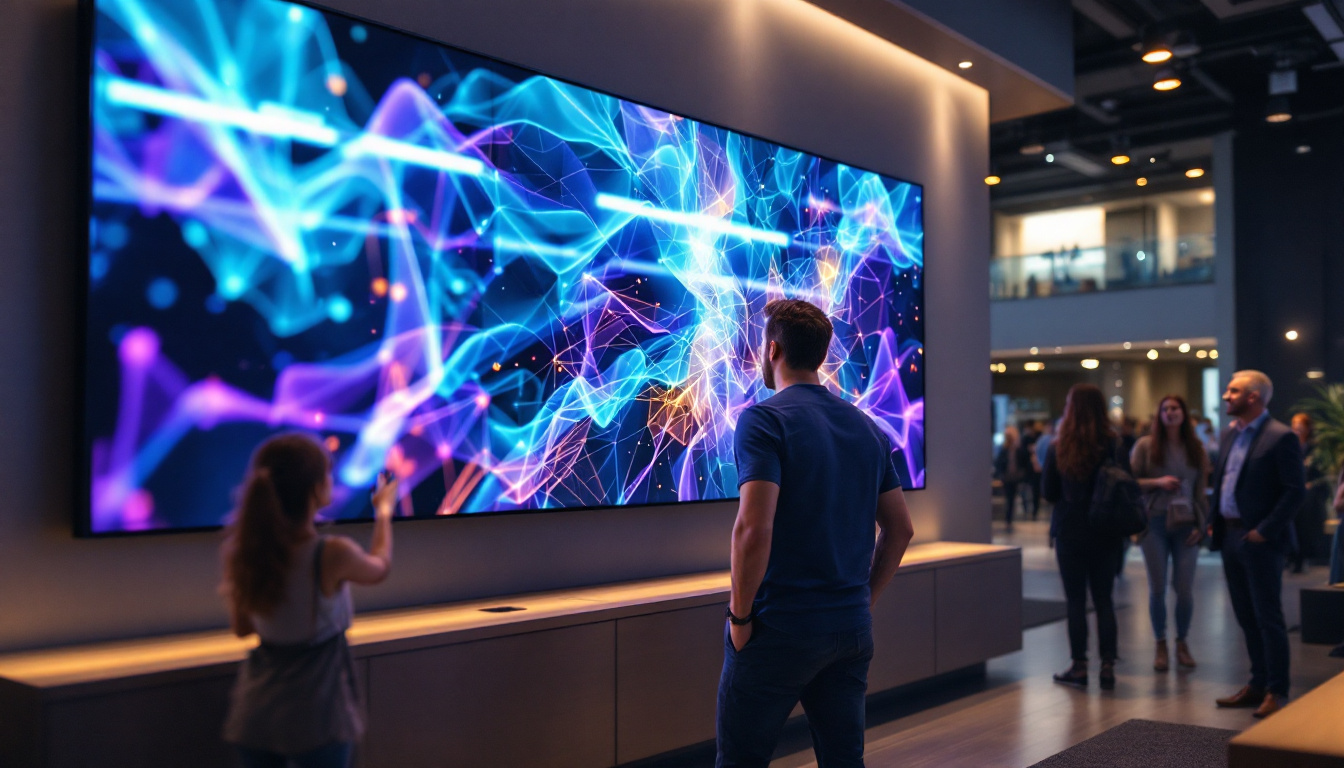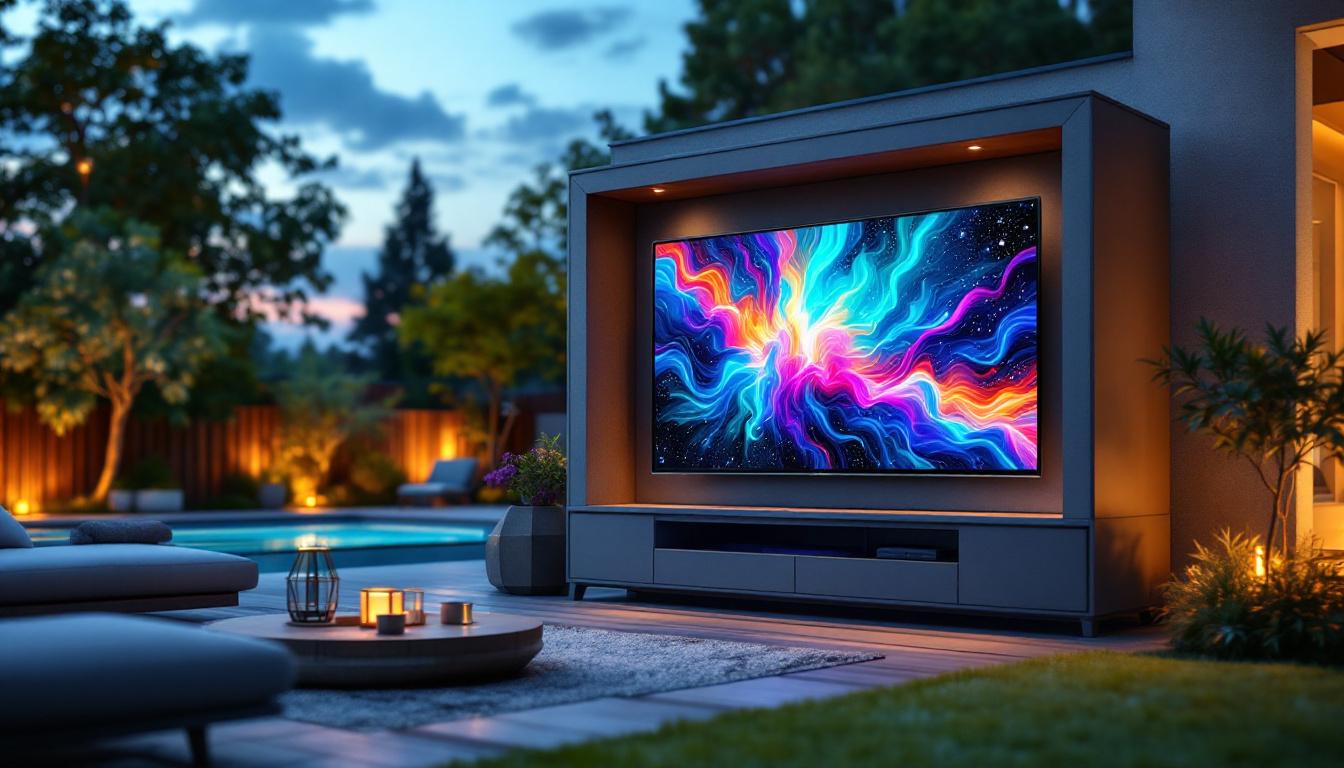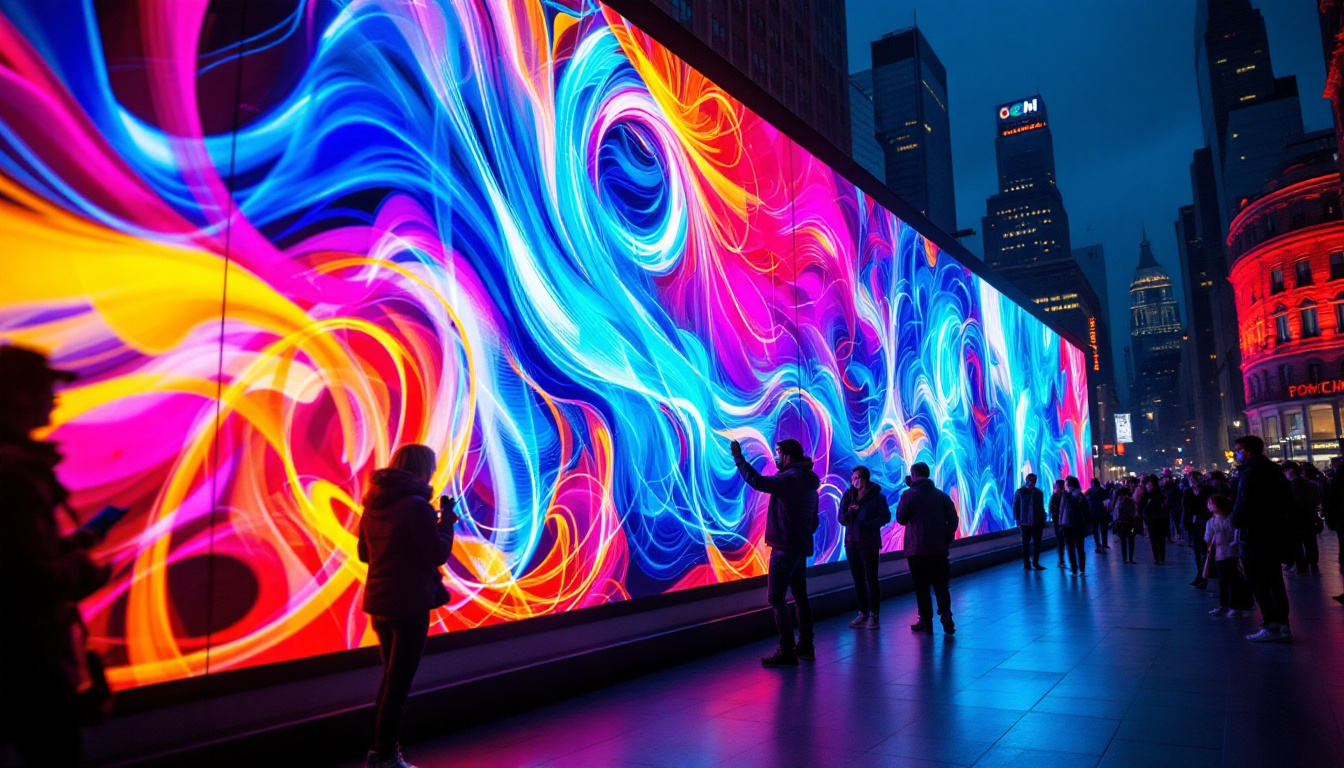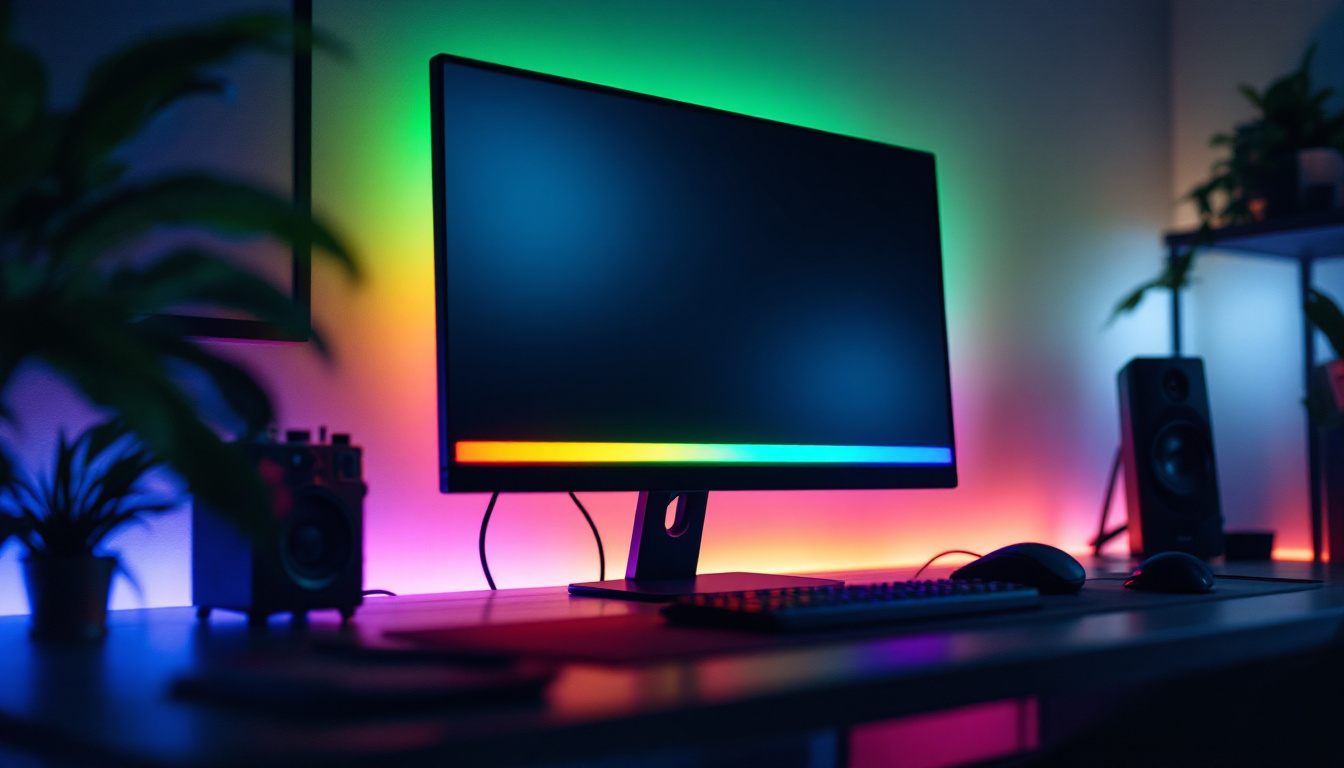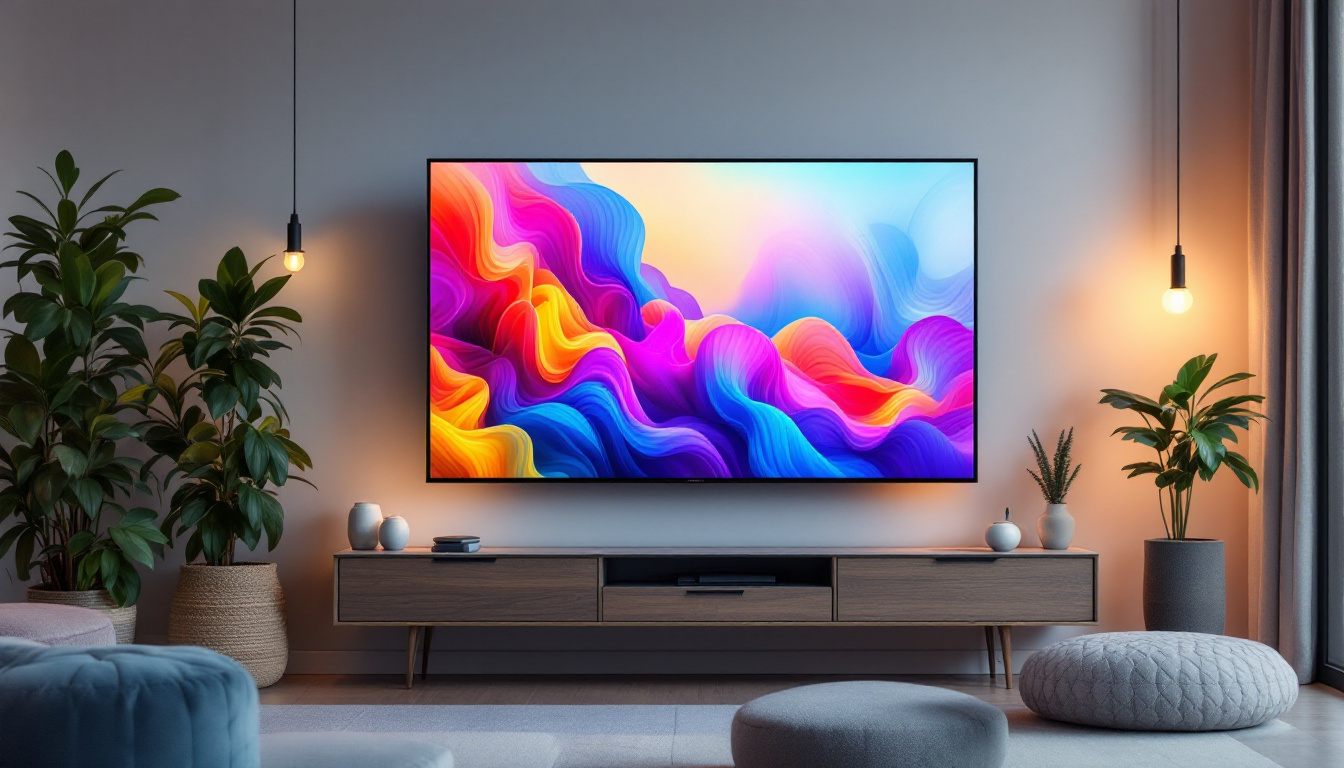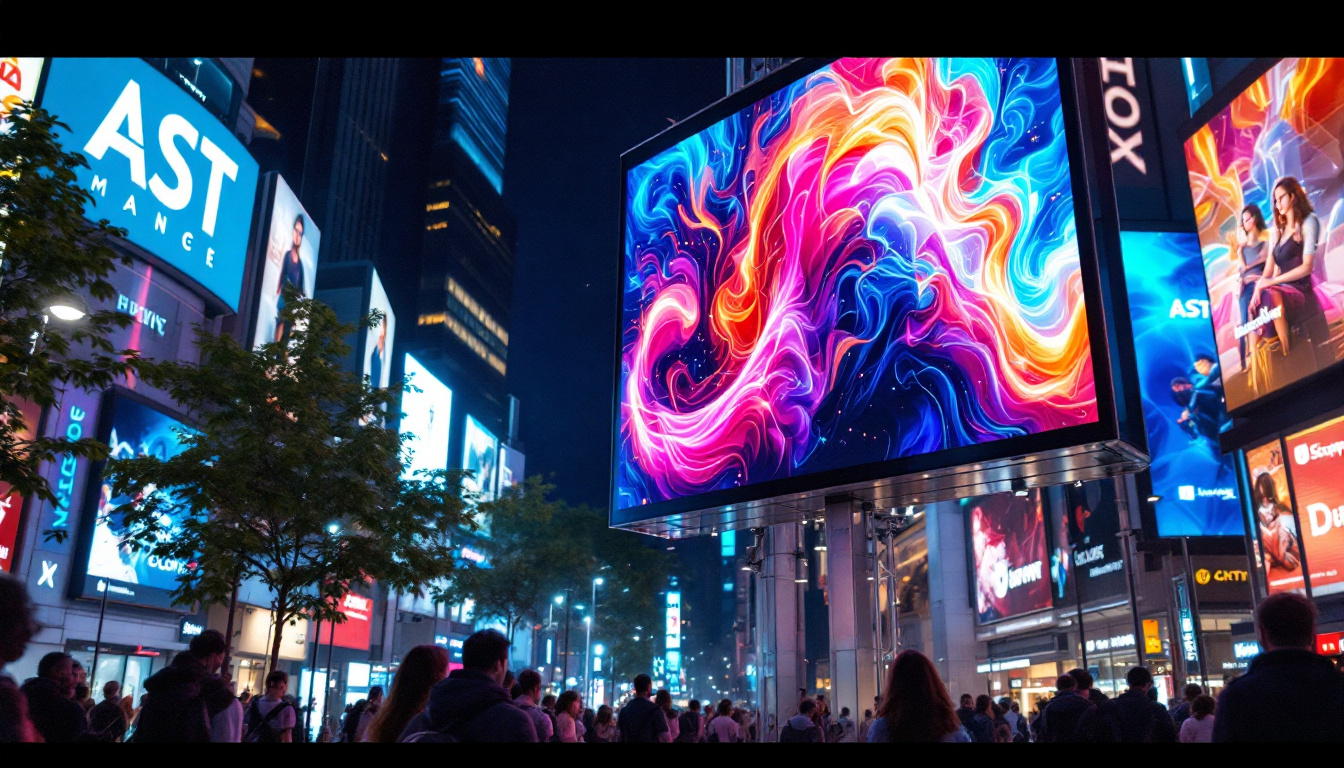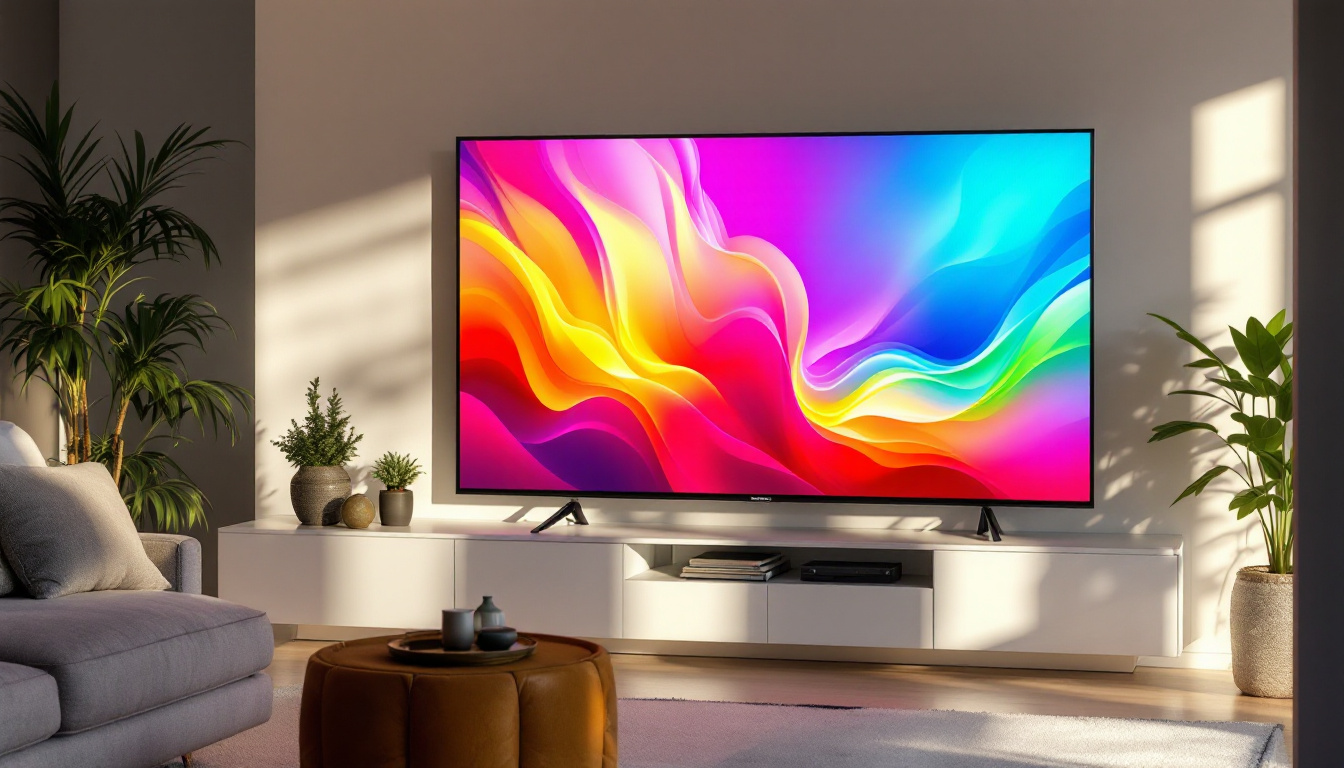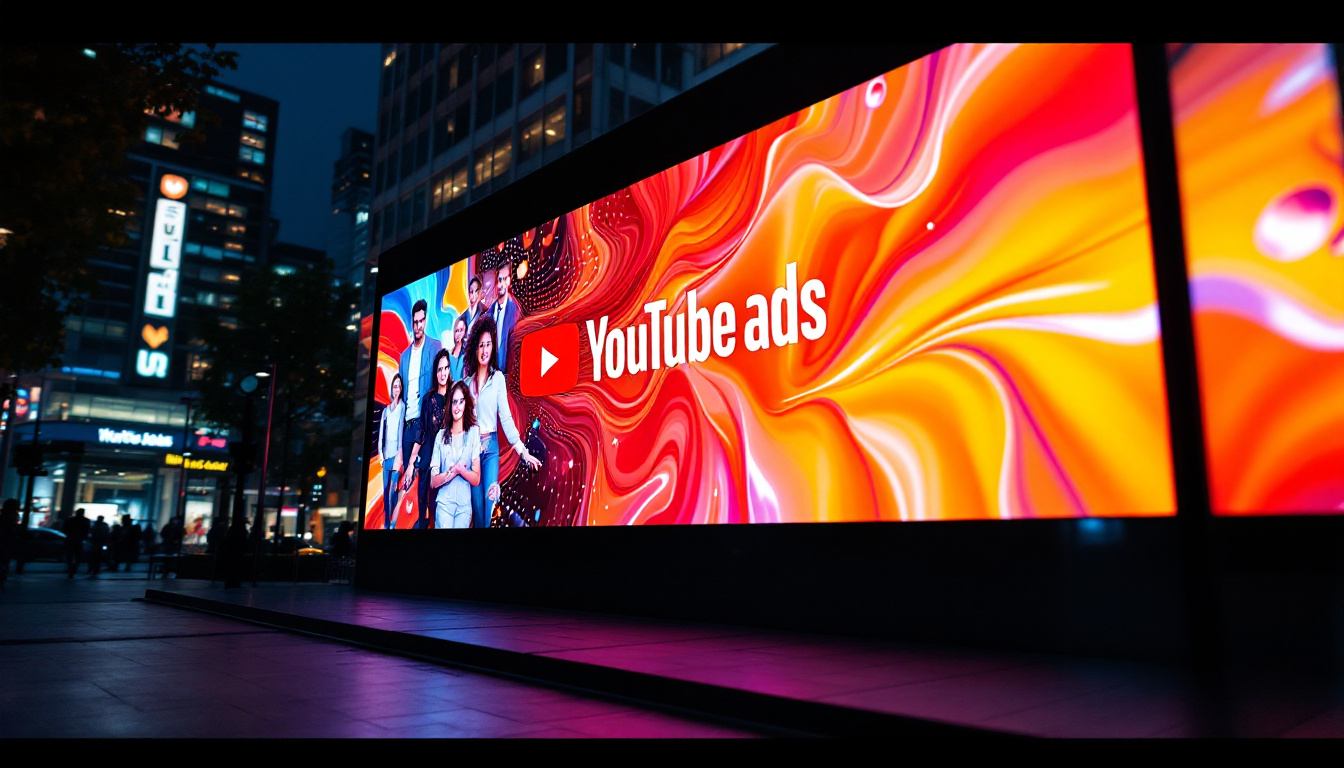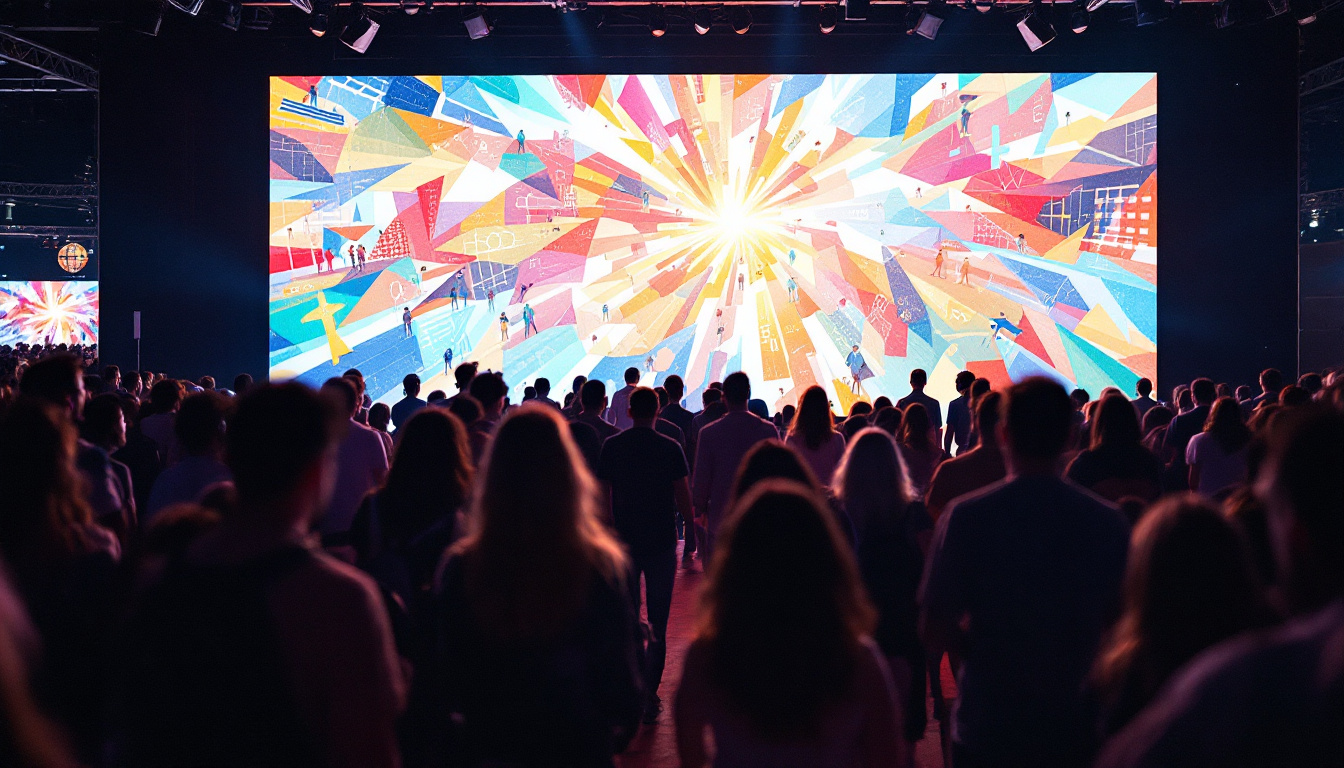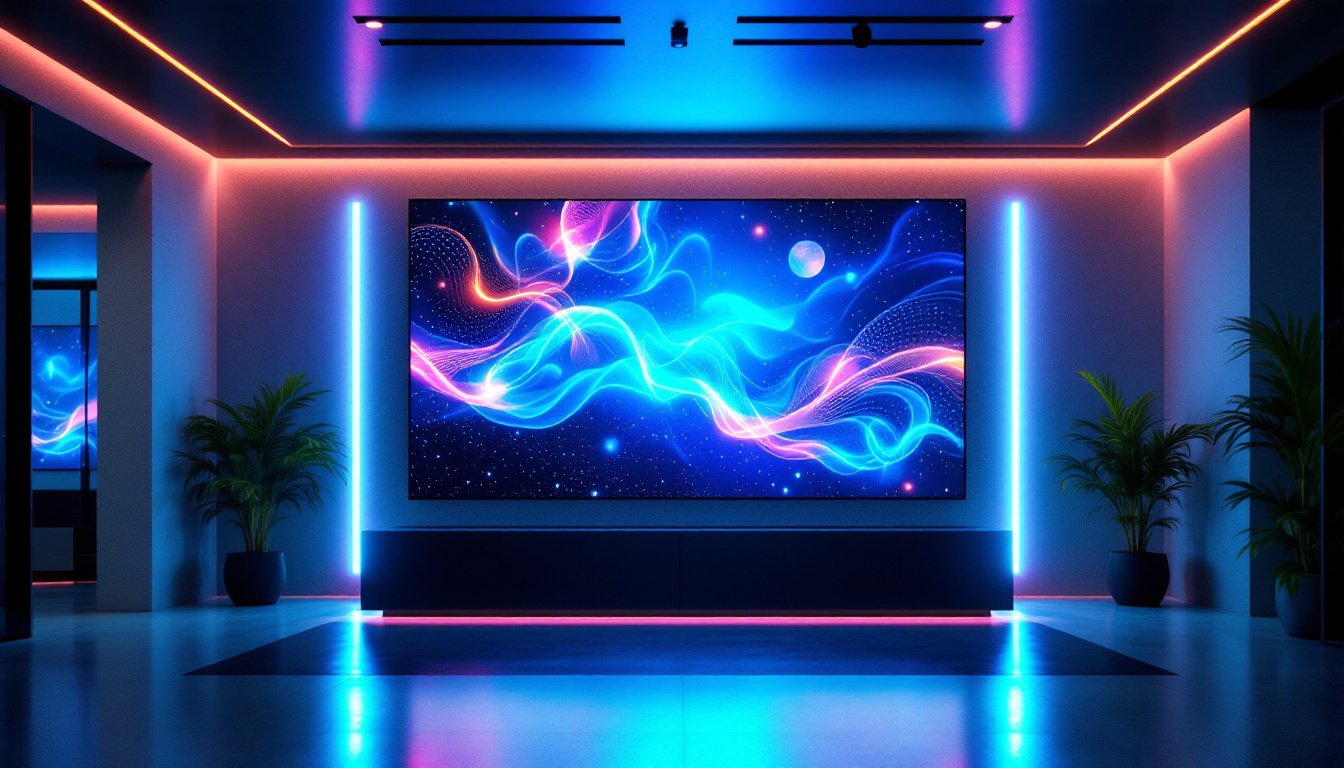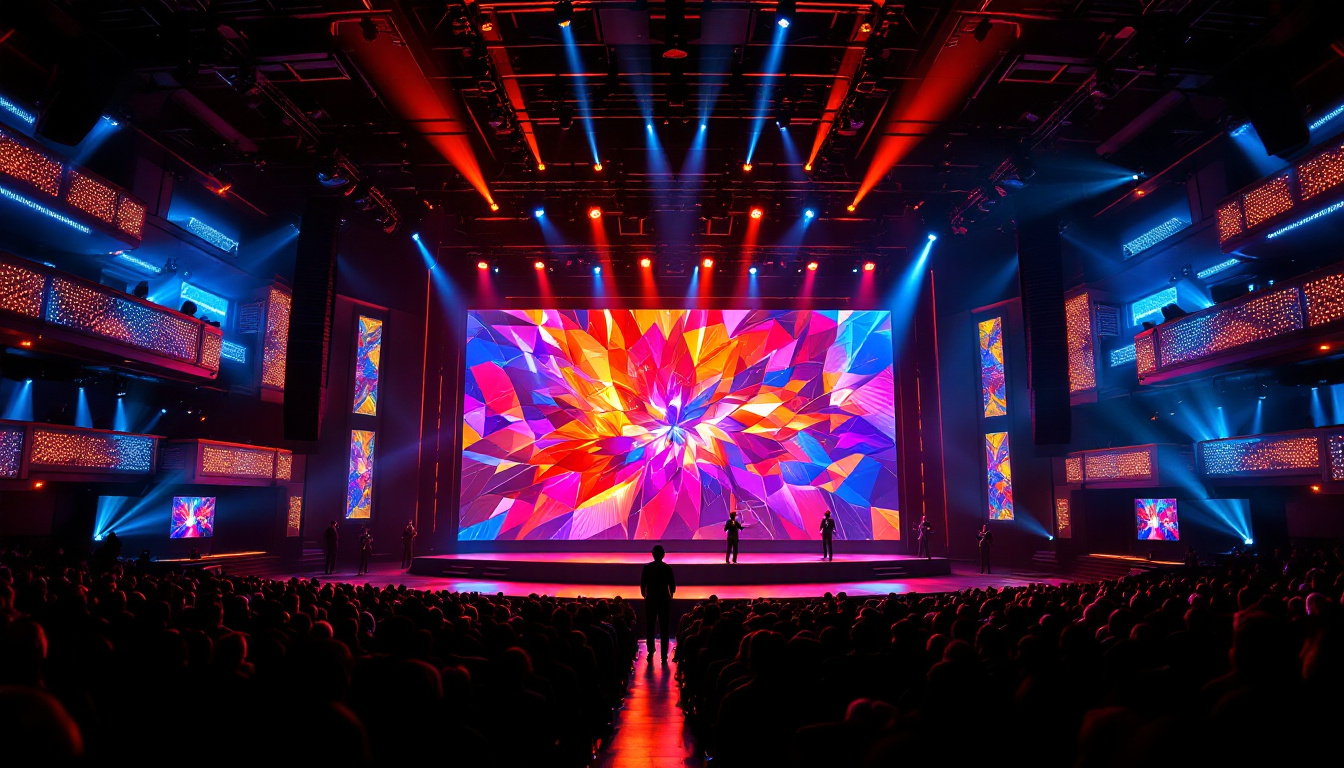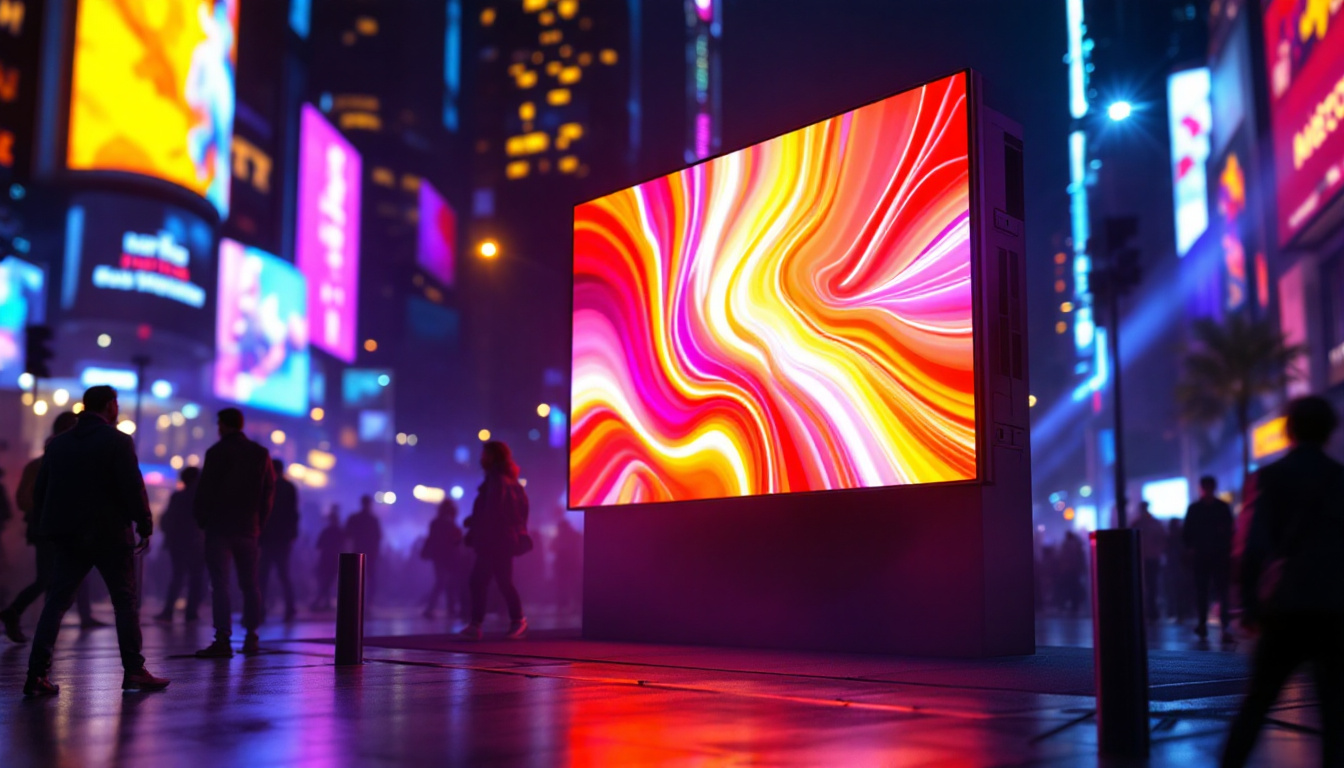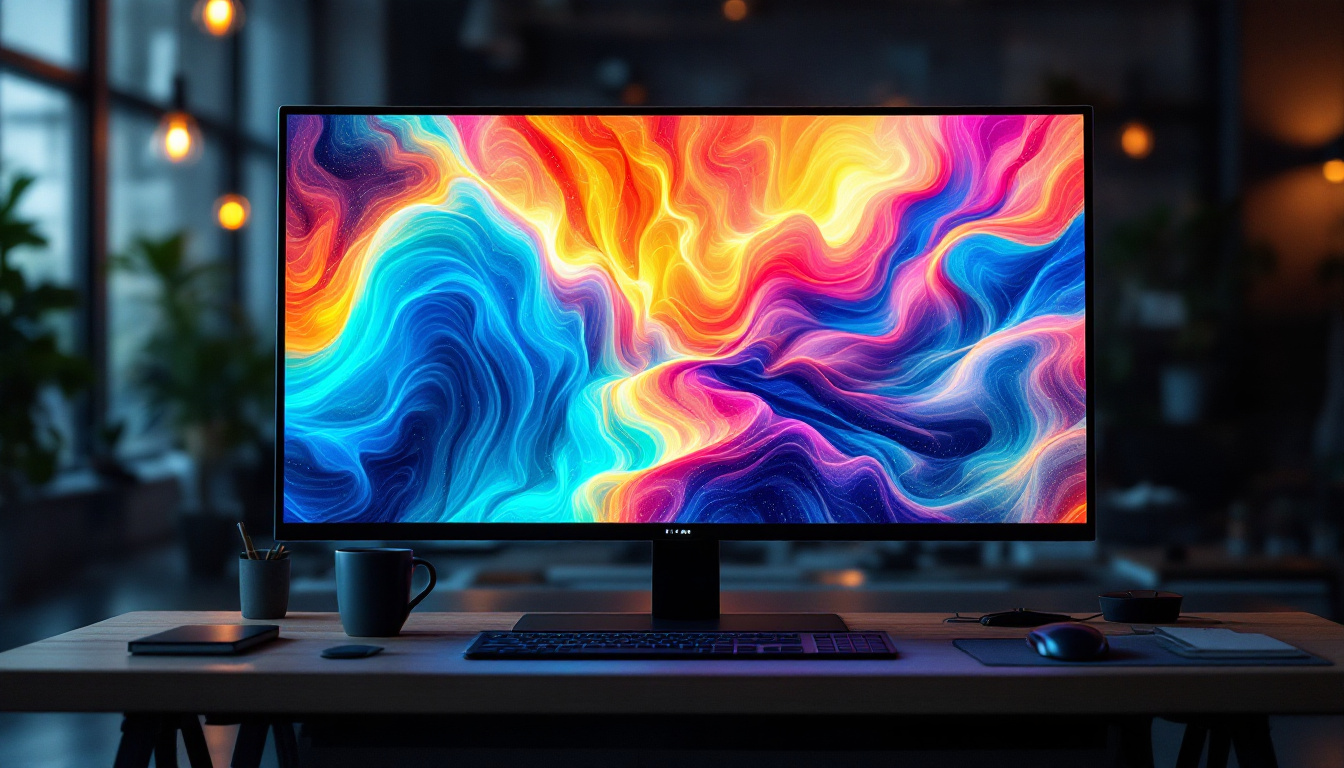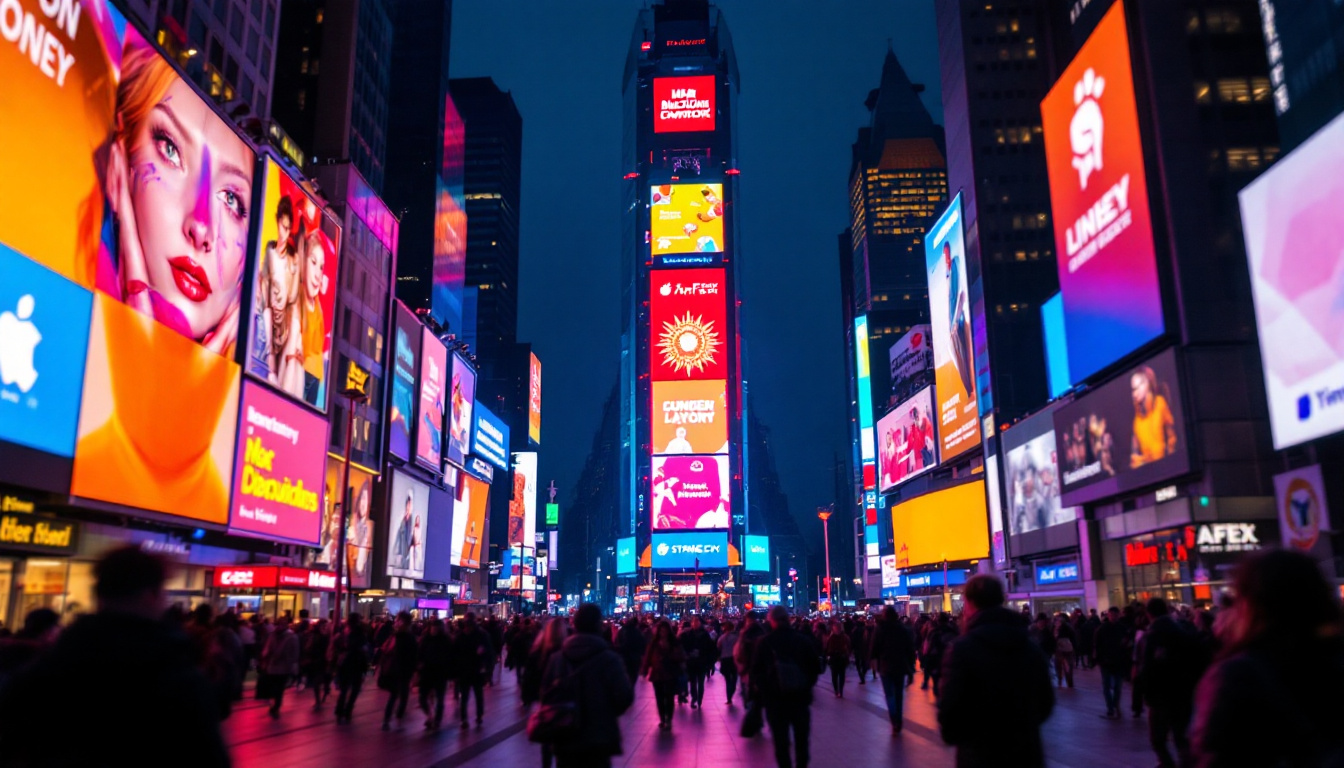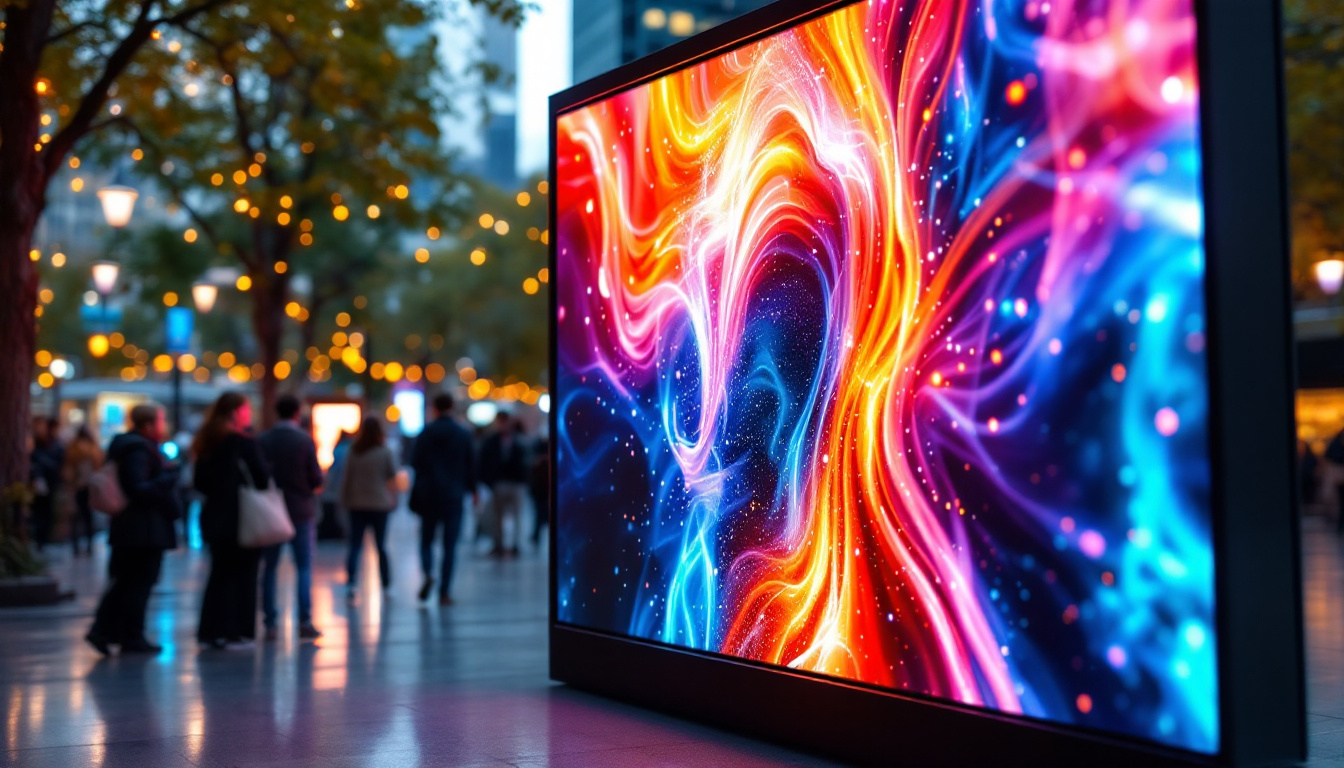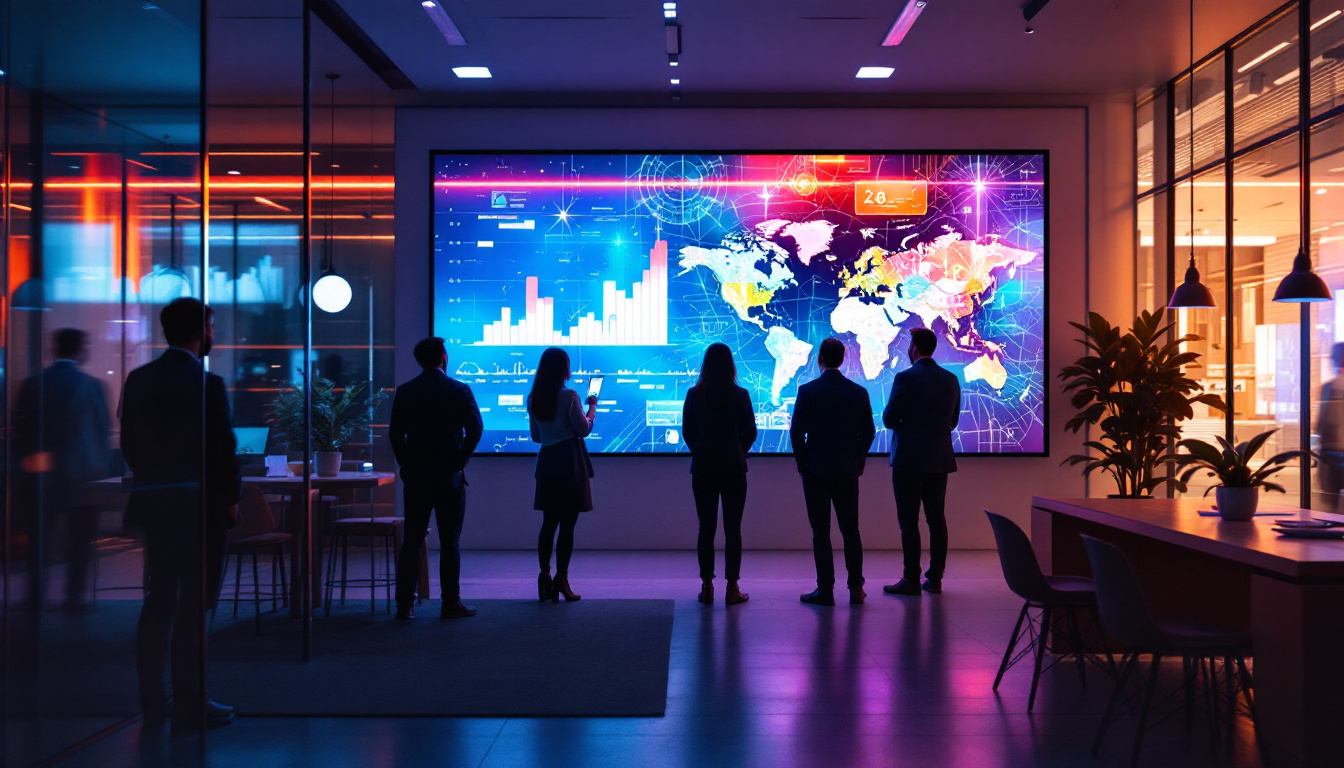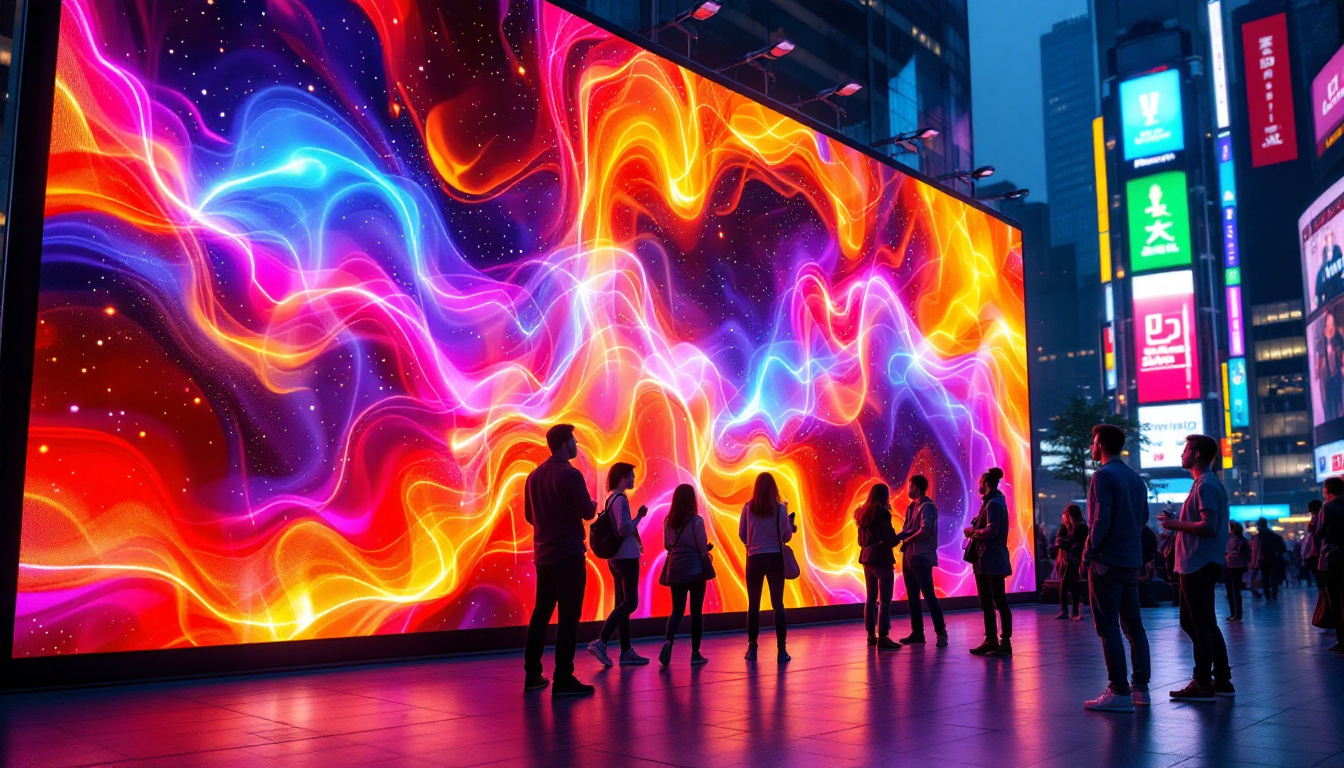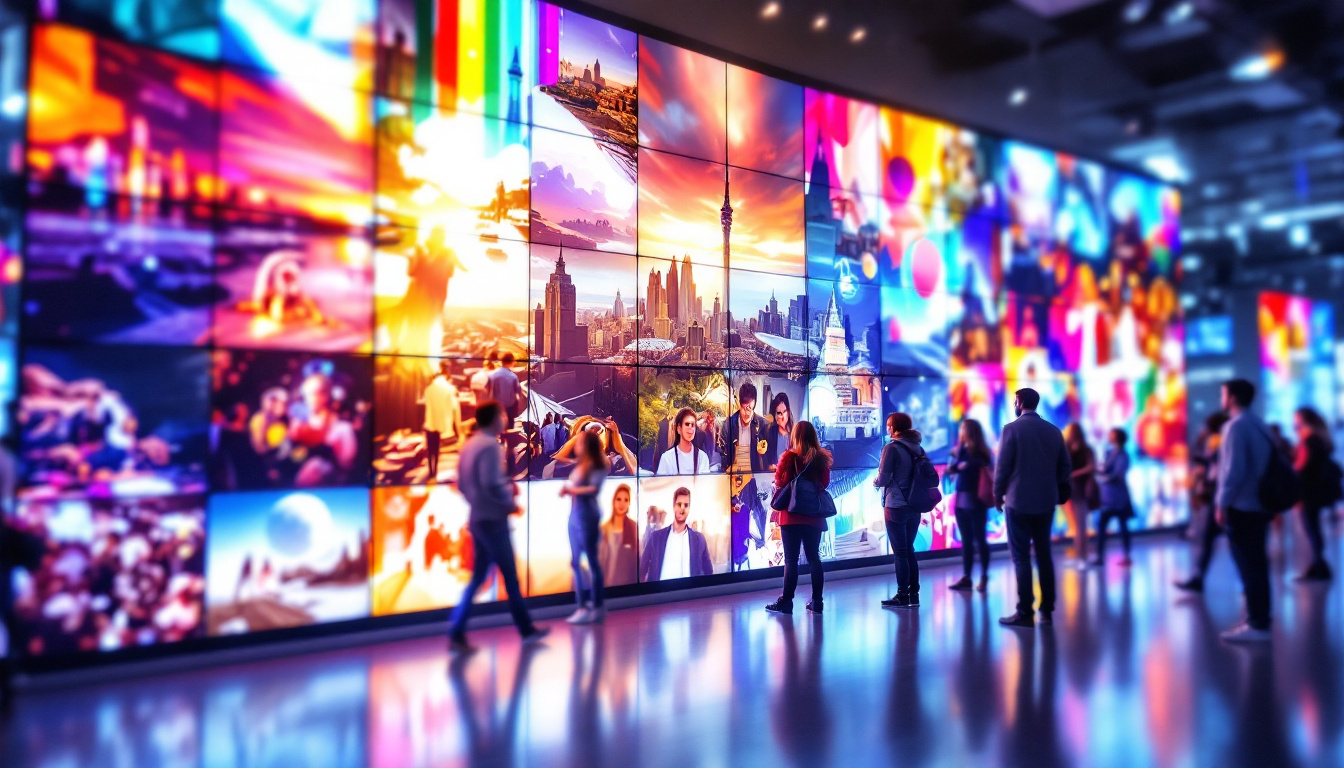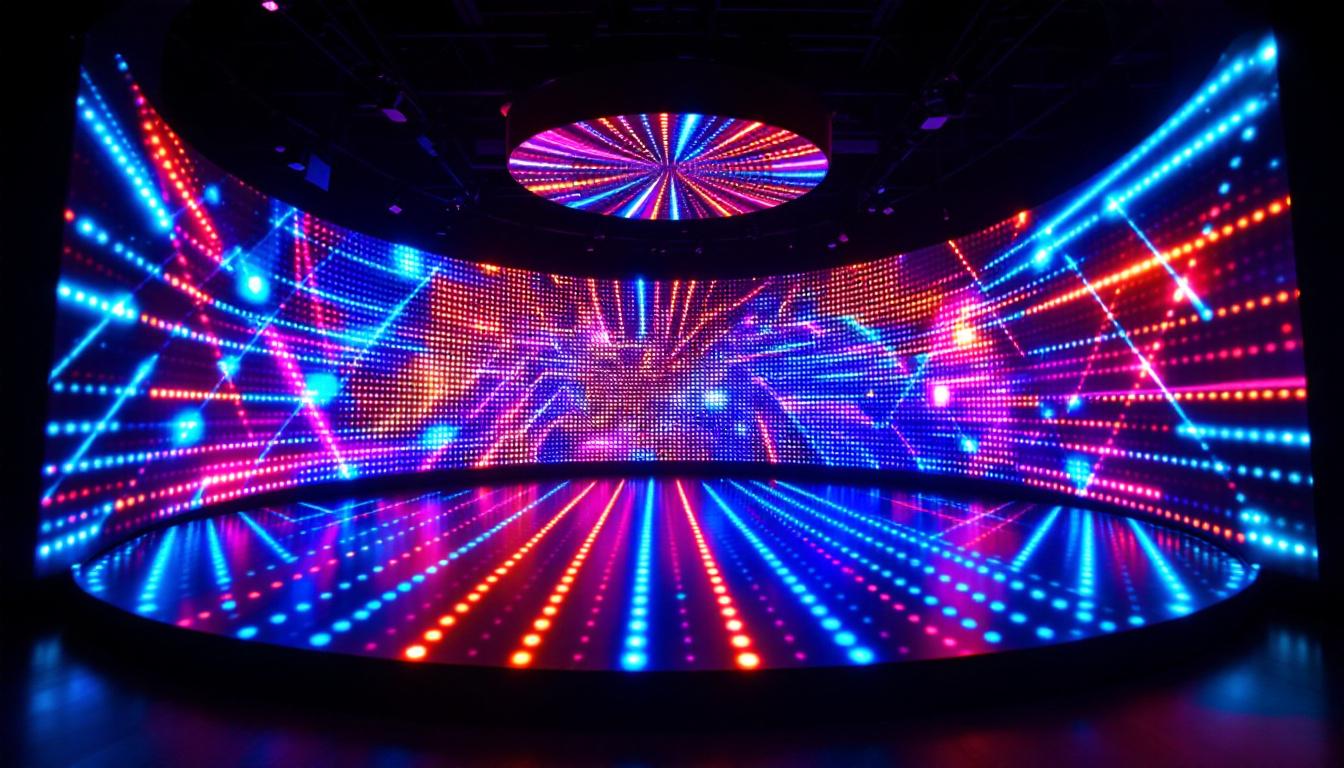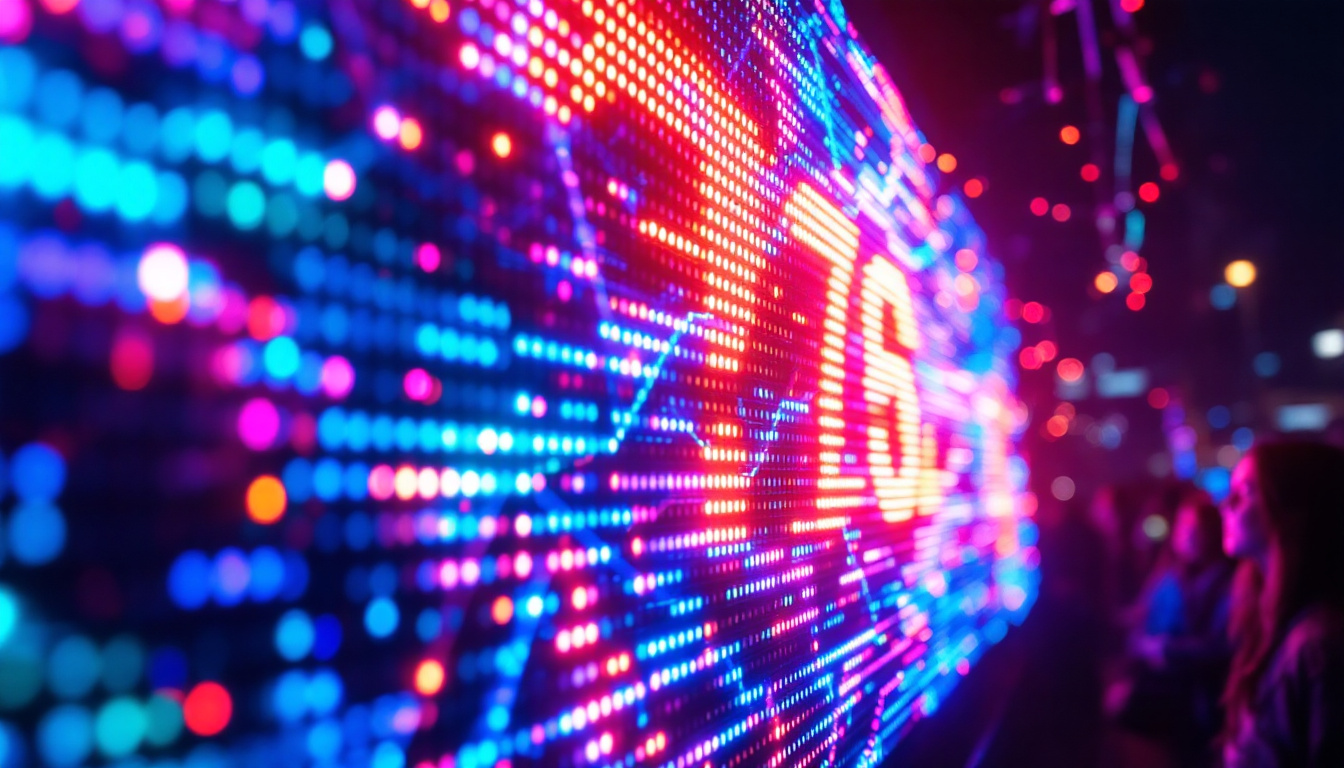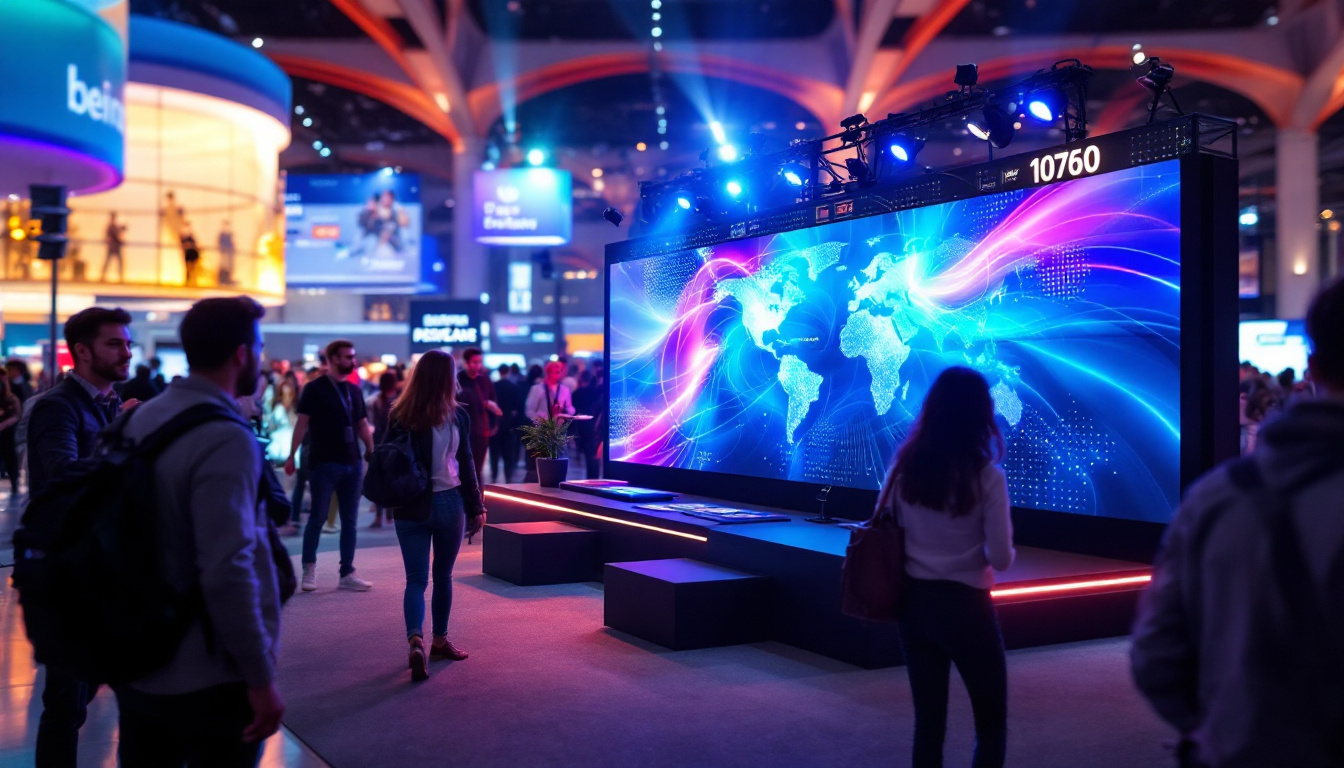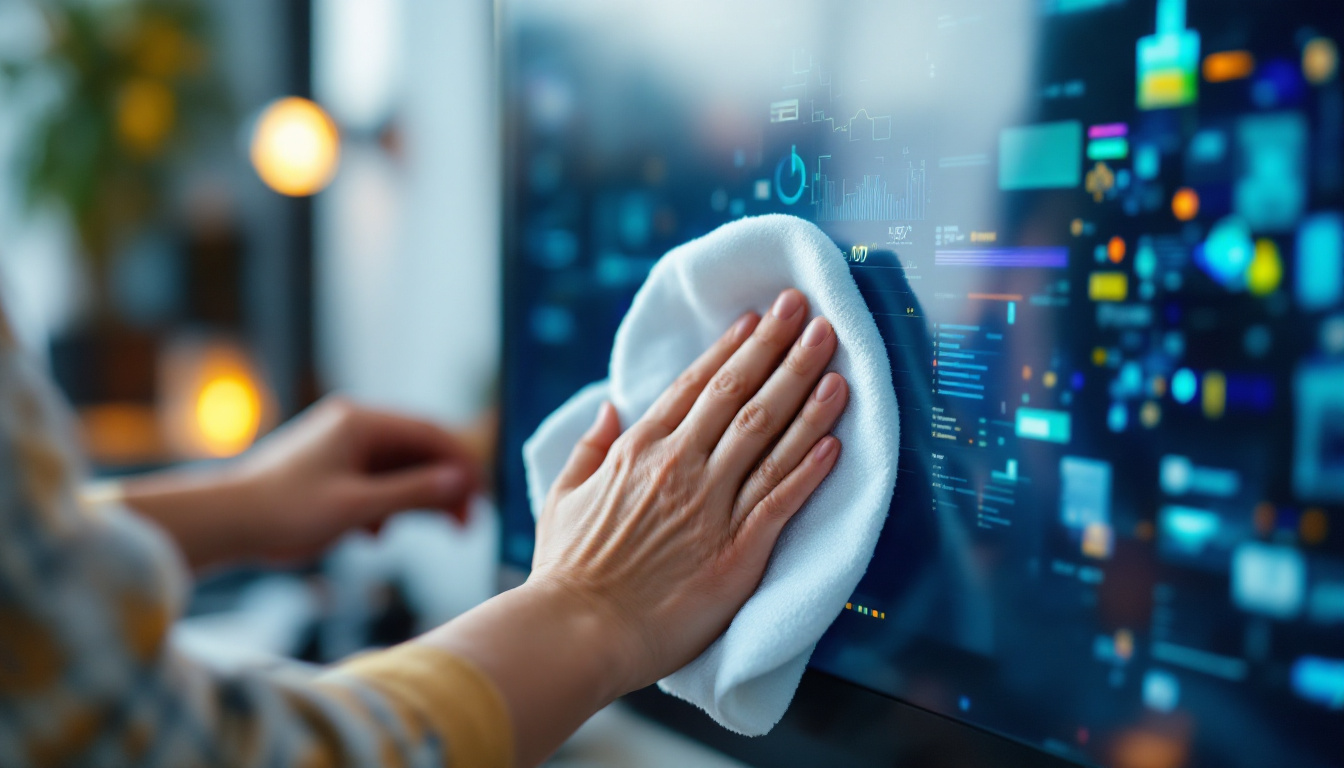TV Wall Back Panel: LED Display Explained
In the world of modern entertainment, LED displays have revolutionized the way we consume media. Whether in homes, offices, or public spaces, these displays provide vibrant colors, sharp images, and an immersive viewing experience. However, the technology behind these displays is often overlooked. One crucial component that plays a significant role in the functionality and aesthetics of LED displays is the TV wall back panel. This article delves into the intricacies of TV wall back panels and how they enhance LED displays.
Understanding LED Displays
LED, or Light Emitting Diode, displays are a type of flat-panel display technology that utilizes LEDs to produce images. These displays are widely favored for their brightness, energy efficiency, and longevity. Unlike traditional LCD screens, which rely on backlighting to illuminate the display, LED screens emit light directly from the diodes, resulting in deeper blacks and more vivid colors.
The Technology Behind LED Displays
The core of LED technology lies in its ability to control light at a granular level. Each pixel on an LED screen is made up of red, green, and blue diodes. By adjusting the intensity of each diode, an extensive range of colors can be produced. This capability allows for high dynamic range (HDR) content, which enhances the viewing experience by providing more detail in both bright and dark areas of an image.
Moreover, LED displays can be categorized into two main types: direct-lit and edge-lit. Direct-lit LED displays have LEDs placed directly behind the screen, providing uniform brightness. In contrast, edge-lit displays have LEDs positioned along the edges, which can lead to some inconsistencies in brightness but allows for thinner designs. This distinction is crucial for consumers and manufacturers alike, as it influences not only the visual quality but also the overall design and versatility of the display.
Benefits of LED Displays
LED displays offer numerous advantages over traditional display technologies. Firstly, they consume less power, making them more environmentally friendly and cost-effective in the long run. Secondly, they have a longer lifespan, often exceeding 50,000 hours of use. This durability is particularly beneficial for commercial applications where displays are used continuously. Furthermore, their resilience to temperature fluctuations and humidity makes them suitable for a variety of environments, from outdoor advertising to indoor exhibitions.
Additionally, LED displays are known for their high refresh rates, which reduce motion blur during fast-paced scenes, making them ideal for sports and action movies. Their lightweight and slim profiles also make them easier to install, especially in wall-mounted configurations. Beyond aesthetics and performance, LED technology has also paved the way for innovations such as flexible displays that can be curved or shaped to fit unique spaces, enhancing creative possibilities in both residential and commercial settings. As technology continues to evolve, we can expect even more advancements in LED display capabilities, including improved color accuracy and integration with smart technologies.
The Role of the TV Wall Back Panel
The TV wall back panel serves as the backbone for LED displays, providing structural support and housing essential components. It plays a pivotal role in both the installation and functionality of the display. Understanding its purpose and design is crucial for anyone looking to create a seamless and effective viewing experience.
Structural Support and Stability
One of the primary functions of a TV wall back panel is to provide stability to the LED display. It ensures that the screen is securely mounted and can withstand various environmental factors, such as vibrations and temperature changes. A well-constructed back panel is essential for maintaining the integrity of the display, especially in high-traffic areas where accidental bumps or movements may occur.
Moreover, the back panel can be designed to accommodate multiple screens, allowing for the creation of video walls. These configurations are often used in commercial settings, such as retail stores, airports, and conference rooms, where large, eye-catching displays are necessary to capture attention. The versatility of the back panel design also means that it can be customized to fit specific spatial requirements, ensuring that the display not only functions optimally but also enhances the aesthetic appeal of the environment.
Integration of Components
In addition to providing structural support, the TV wall back panel also houses various components that are essential for the operation of the LED display. This includes power supplies, signal processors, and cooling systems. Proper integration of these components is vital for ensuring optimal performance and longevity of the display.
For instance, efficient cooling systems are necessary to prevent overheating, which can lead to reduced performance or even damage to the display. The back panel can be designed with ventilation in mind, allowing for adequate airflow while maintaining a sleek appearance. Additionally, the integration of cable management systems within the back panel can help keep the installation tidy and organized, reducing clutter and making maintenance easier. This thoughtful design not only enhances the functionality of the display but also contributes to a more professional and polished look, which is particularly important in environments where first impressions matter.
Furthermore, advancements in technology have led to the development of smart back panels equipped with monitoring systems that can track performance metrics. These systems can alert users to potential issues before they become critical, allowing for timely maintenance and minimizing downtime. Such innovations underscore the importance of the back panel not just as a support structure, but as a vital component in the overall ecosystem of modern display technology.
Design Considerations for TV Wall Back Panels
When designing a TV wall back panel, several factors must be considered to ensure both functionality and aesthetics. The choice of materials, dimensions, and mounting options can significantly impact the overall effectiveness of the display.
Material Selection
The materials used for constructing a TV wall back panel can vary widely, from metal to wood or composite materials. Metal panels are often favored for their durability and strength, making them suitable for heavy-duty applications. On the other hand, composite materials can offer a lighter alternative while still providing adequate support.
Additionally, the choice of material can affect the panel’s thermal properties. For instance, materials with better thermal conductivity can help dissipate heat more effectively, contributing to the longevity of the display.
Size and Dimensions
The size and dimensions of the TV wall back panel should be tailored to the specific requirements of the LED display being used. A panel that is too small may not provide adequate support, while one that is excessively large can lead to unnecessary bulk and complexity in installation.
Moreover, the dimensions of the back panel should also consider the spacing between multiple displays in a video wall setup. Proper spacing ensures that the bezels of the screens do not interfere with the overall viewing experience, allowing for a more cohesive image.
Installation Process of TV Wall Back Panels
The installation of a TV wall back panel is a critical step that requires careful planning and execution. A well-executed installation not only enhances the aesthetic appeal of the display but also ensures its functionality and durability.
Preparation and Planning
Before installation, it is essential to assess the location where the TV wall back panel will be mounted. Factors such as wall material, available space, and electrical access should be considered. Proper planning can help avoid potential issues during installation, such as inadequate support or wiring complications.
Additionally, it is advisable to create a detailed installation plan that outlines the steps involved, including measurements, mounting techniques, and component integration. This plan serves as a guide to ensure that all aspects of the installation are executed efficiently.
Mounting Techniques
There are various mounting techniques that can be employed when installing a TV wall back panel. The choice of technique often depends on the wall structure and the weight of the LED display. Common methods include wall brackets, rail systems, and custom mounts.
Wall brackets are a popular choice for their simplicity and effectiveness. They provide a secure attachment point for the back panel while allowing for easy adjustments. Rail systems, on the other hand, offer greater flexibility, enabling multiple displays to be mounted in a single configuration. Custom mounts may be necessary for unique installations, providing tailored solutions that meet specific requirements.
Maintenance and Care of TV Wall Back Panels
Maintaining the TV wall back panel is crucial for ensuring the longevity and performance of the LED display. Regular maintenance can prevent issues such as overheating, dust accumulation, and structural weaknesses.
Regular Inspections
Conducting regular inspections of the back panel can help identify potential problems before they escalate. This includes checking for signs of wear and tear, ensuring that all components are securely mounted, and verifying that cooling systems are functioning properly.
In addition to structural inspections, it is also essential to monitor the performance of the LED display itself. Any flickering, color inconsistencies, or other anomalies should be addressed promptly to prevent further damage.
Cleaning and Upkeep
Cleaning the TV wall back panel is an important aspect of maintenance. Dust and debris can accumulate over time, potentially affecting the performance of cooling systems and other components. Using a soft cloth and mild cleaning solution can help keep the panel clean without causing damage.
Furthermore, it is advisable to avoid using abrasive materials or harsh chemicals, as these can scratch or degrade the surface of the panel. Regular cleaning not only enhances the appearance of the installation but also contributes to its overall functionality.
Conclusion
In summary, the TV wall back panel is a fundamental component of LED displays that significantly impacts their performance, aesthetics, and durability. Understanding the role of the back panel, from providing structural support to housing essential components, is crucial for anyone involved in the installation or maintenance of LED displays.
As LED technology continues to evolve, the design and functionality of TV wall back panels will also advance, offering even greater possibilities for immersive viewing experiences. Whether in commercial settings or home theaters, investing in a quality back panel can enhance the overall effectiveness of LED displays, ensuring that they remain a captivating medium for years to come.
Discover the Future of LED Displays with LumenMatrix
Ready to elevate your visual experience with the latest in LED display technology? LumenMatrix is at the forefront of innovation, offering a diverse range of LED display solutions tailored to meet your needs. From stunning Indoor and Outdoor LED Wall Displays to dynamic Vehicle and Sports LED Displays, our products are designed to captivate and engage. Explore our cutting-edge Floor, Custom, All-in-One, and Transparent LED Displays, each crafted to revolutionize visual communication and enhance your brand’s visibility. Don’t miss out on the opportunity to transform your space. Check out LumenMatrix LED Display Solutions today and step into a world of vivid imagery and unparalleled clarity.


